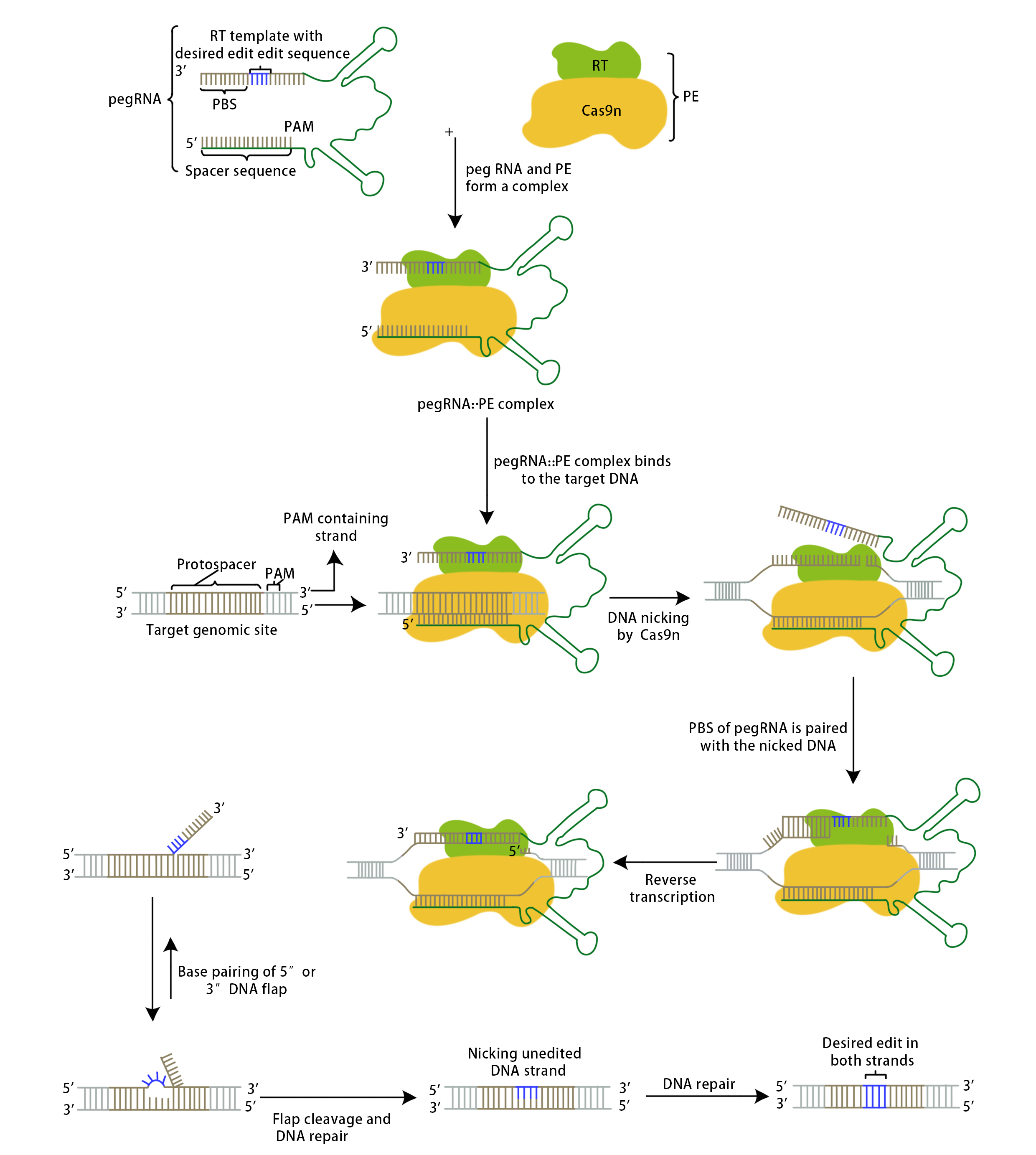Prime Editing--Precise gene editing
Gene editing is a precise modification of the genome, which is an important means of studying gene function. At present, the commonly used gene editing method is the CRISPR-Cas9 system. After a decade of development, the CRISPR-Cas9 system has made breakthroughs in gRNA, PAM, single base editing, and multi bases editing. However, it is still difficult to achieve arbitrary modification of bases.
In 2019, Professor David Liu's team from Harvard University developed a method for precise gene editing based on CRISPR - Prime editing. In theory, Prime editing can achieve the editing effects of all editing methods today.
Prime editing is a technology optimized on the basis of traditional CRISPR/Cas9. Prime editing consists of two parts: one is nCas9 and reverse transcriptase fusion protein, and the other is pegRNA (prime editing gRNA). Unlike general gRNAs, pegRNA not only targets to specific DNA region that needs to be edited, but also carrying a "reverse transcription template". Cas9-reverse transcriptase fusion protein will precisely cleave the target DNA single strand under the guidance of pegRNA, and then synthesize DNA containing the corrected bases according to the "reverse transcription template". The DNA repair mechanism within cells will integrate this newly synthesized sequence into the genome.

Prime Editing principle
Prime Editing is capable of performing highly specified deletion, insertion, and base exchange. The biggest difference from other CRISPR-based technologies is that it does not generate DNA double strand breaks (DBS) and does not require donor DNA, making it very easy to achieve precise editing.
Advantages of Prime Editing
(1) High efficiency: More efficient than HDR, editing efficiency reach to 30-40%.
(2) Various types of editing: point mutation, insertion, and precise knockout.
(3) Low off-target effect.
EDITGENE uses the most advanced gene editing technology, which greatly improves the success rate and efficiency of experiments. Combining the 3D single-cell printer, ensure efficient positive clones screening.










![[Literature Review] A Novel Mechanism of Cisplatin Resistance in Osteosarcoma: CRISPR Screening Identifies Key Regulators in Organoid Models](/uploads/20250527/bL2GJjteMDvzmZys_53c82bdd67704fe0e159246934f924ee.png)
![[Quality Share] Decoding Point Mutations: A Comprehensive Guide to Three Common Construction Methods](/uploads/20250328/ESzk5OC49wpxIHVv_3cbfa5e98ea1d238127fe23c72b0f4b2.png)

Comment (4)